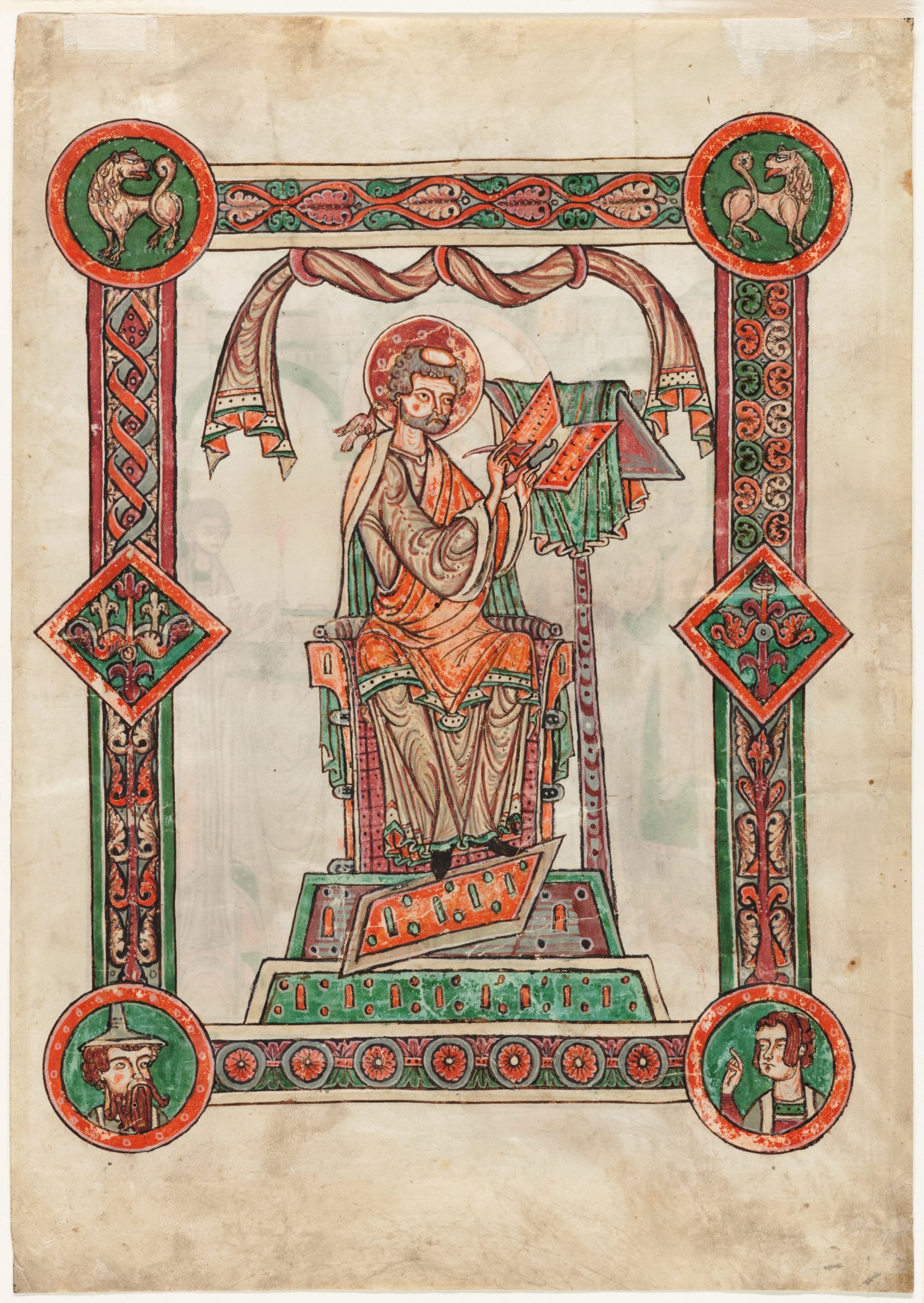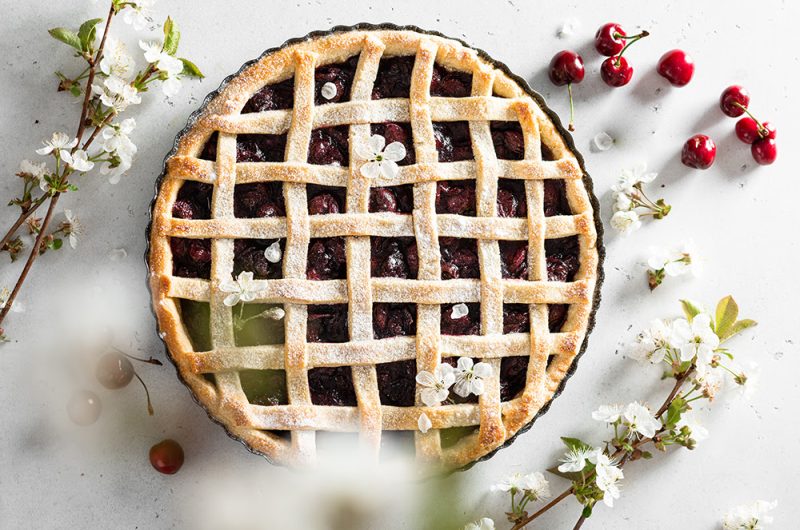
ABOUT THE ART
School of Weingarten Abbey, “Saint Gregory as Author,” 1188-1200, opaque watercolor on parchment, 34.9 × 24.5 cm (13 3/4 × 9 11/16 in.), Clarence Buckingham Collection, Art Institute of Chicago.
This author portrait is a tribute to Saint Gregory, who served as Pope Gregory the Great from 590 to 604. The image portrays him writing his homilies, with the dove of the Holy Ghost providing him with inspiration while perched on his shoulder. This leaf, which has been illuminated on both sides, is believed to be the only surviving fragment of a manuscript about the life of Saint Gregory. The manuscript was produced in the scriptorium of Weingarten Abbey, located close to Lake Constance, during the tenure of Abbot Meingoz from 1188 to 1200. During this period, the monastic scribes still upheld the scholarly tradition of text and illustration. However, soon secular workshops would become dominant in producing books for new universities, administrative bodies, and other clients.
Pope Gregory the Great – September 3rd
Gregory the Great is one of the most celebrated popes in church history. He was chosen to be the leader of the church in the middle of the Dark Ages. Being the first Benedictine in the office, he knew the importance of order in the life of the church. He strengthened the institutions of the church and founded new ones, turning his own home into one of the first hospitals. He sent missionaries to the British Isles and is credited with their evangelization. Gregory envisioned a church that held society together in the absence of government and other community ties. He saw the church as central to a healthy community, and under his leadership, the church did everything from setting up markets so that the economies could succeed to promoting literacy.
He may be remembered most for supporting the arts. He promoted the use of stained-glass and other art to help inspire evangelization, but also to teach the Christian faith, calling the windows and art of the church the Bible for the poor. He also reformed the Christian service and elevated music as an essential part of worship. The music that he helped spread is still called Gregorian chant. Few leaders of the church have made a mark on the world as big as Gregory, even Protestants like Calvin celebrated his life and legacy. Gregory is an important model for the fragmented world of today as the church must again capture his vision for a church that holds things together.
We are celebrating Gregory the Great with a cherry pie. There is a legend that this Pope, who was known for frugality and simplicity, one early spring day woke up with a craving for a big bowl of cherries. It was so unusual that the entire Vatican went searching, but alas the cherries were just starting to blossom and the season had not come. But one gardener in great despair for not being able to please the beloved pope was visited by St. Mark and miraculously his blossoms turned into red cherries. This cherry pie recipe is surely something that Gregory would have loved.

Cherry Pie
Cherry pie is a classic dessert made with a flaky pastry crust and a sweet, tart cherry filling. The filling is typically made with cherries that are cooked down with sugar, Tapioca starch, and a bit of lemon juice to create a thick, jammy consistency. The pie can be served warm or cold and is often topped with a scoop of vanilla ice cream or a dollop of whipped cream.
Keep the screen of your device on
Ingredients
- Pie Dough
2 1/2 cups 2 1/2 flour
1 teaspoon 1 salt
1 1/2 1 1/2 sticks butter (cold, cubed)
8 tablespoons 8 ice water
- Filling
28 oz 28 frozen cherries (thawed until softened)
2 tablespoons 2 fresh lemon juice
1 cup 1 sugar
3/4 teaspoon 3/4 salt
1/3 cup 1/3 + 1 teaspoon Tapioca starch (such as Bob’s Red Mill)
- Egg Wash
1 large 1 egg
Pinch salt
Directions
- In a medium-sized bowl, add the flour and salt. Mix with fork until combined.
- Add in cubed butter and break up into flour with a fork. Mixture will still have lumps about the size of small peas.
- Gradually add the ice water and continue to mix until the dough starts to come together. You may not need all of the water, but if the dough is too dry then add more. The dough should not be very tacky or sticky. A pastry cutter is good to use for this process.
- Work the dough together with your hands and turn out onto a surface. Work into a ball and cover with cling wrap. Refrigerate for 20 – 30 minutes. This will make the dough easier to work with.
- Preheat the oven to 375°F (200°C).
- For the Filling: Combine pitted cherries, lemon juice, sugar, salt, and tapioca starch in a large bowl, folding with a flexible spatula until well combined.
- On a floured surface, cut the refrigerated pie dough in half and roll out both halves until round and about ?-inch (3 mm) thick.
- Roll the dough around the rolling pin and unroll onto a pie dish making sure the dough reaches all edges. Trim extra if necessary.
- Pour in cherry filling mixture and pat down.
- Roll the other half of the dough on top or cut into strips and make a lattice design on top.
- Trim the extra dough from the edges and pinch the edges to create a crimp. Make sure edges are sealed together.
- Brush the pie with the beaten egg wash.
- If not using a lattice design, cut four slits in the top of the pie to create a vent.
- Place pie dish on a rimmed baking sheet and bake pie for 50-60 minutes or until the crust is golden brown and no grayish or undercooked pastry remains. Internal temperature should reach 210°F.
- Allow to cool completely before slicing.